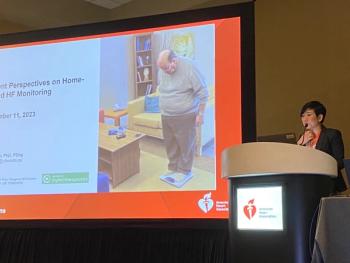
Collaborative efforts leverage CER into coverage strategies
The goal of Comparative Effectiveness Research appears to be something that everyone can agree on
Key Points
THE GOAL OF Comparative Effectiveness Research (CER) appears to be something that everyone-public and private payers, drug manufacturers, healthcare providers and patients-can agree is a good thing. After all, what's not to like about physicians and patients having information that helps them select the best medical treatments?
With the Patient-Centered Outcomes Research Institute (PCORI) starting to take shape, now is the time to meld a partnership between the government, pharmaceutical/device manufacturers and payers. Working together, these interested parties can ensure that medical options are evaluated in a way that serves the greater good and benefits each stakeholder group.
Still there is some debate over what CER encompasses. Some argue that comparative effectiveness should encompass cost-effectiveness and other economic comparisons. Others argue that cost should be separate and a national clinical program should not delve into cost effectiveness, which is the purview of payers. The reform law makes it clear that economic comparisons are beyond the remit of PCORI, but it is also clear to educated observers that quality comparative effectiveness results can become the basis for quality economic comparisons between medical technologies.
It is clear that the demand for evidence is growing and that there's a convergence of needs among public/private payers and pharmaceutical companies. From the creation of PCORI through recent combinations between payers and research organizations, the common goal is to inform clinical decision making with evidence.
PCORI will bring public funds, multiple stakeholders, and transparency to the process of comparing the safety and effectiveness of treatments. It will establish methodologies for how such studies should be conducted, and it will make studies possible that otherwise would be too costly or difficult for any single entity or stakeholder to sponsor.
The Food & Drug Administration's SENTINEL initiative already serves as an example of a large-scale, multi-entity approach to safety by means of a public/private partnership, suggesting that collaboration on such a level is possible in other healthcare areas. CER methodologies, however, are not yet fully agreed upon and key data-from electronic medical records, for example-aren't yet available.
Even so, many expect PCORI to set the standard for how evidence should be developed. The ideal method will be transparent and will have an unrelenting focus on the total weight of evidence, rather than a single study.
While the PCORI will have its own research agenda, MCOs can work with manufacturers and government in the meantime to produce CER information where it would be most advantageous.
Newsletter
Get the latest industry news, event updates, and more from Managed healthcare Executive.






















































